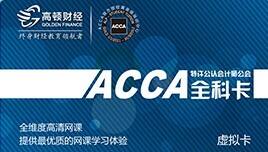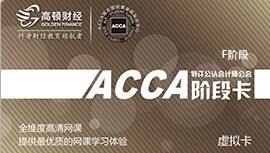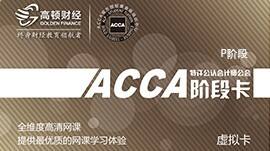2012年ACCA考试《F3财务会计》讲义辅导(3)
☆The accounting equation
Financial accounting is based upon a very simple idea:
The amount of resources supplied by the owner is called capital. The actual resources that are then in the business are called assets. Usually, people other than the owner have supplied some, of the assets, for example, a supplier supplies stock of goods on credit. The business is said to owe a liability towards these suppliers. The following accounting equation always holds true:
The accounting equation:
ASSETS = PROPRITOR’S CAPITAL + LIABILITIES
- Any point in time, the assets of the business will be equal to its liabilities plus the capital of the business;
- Assets less liabilities equal the capital of the business, which is known as netassets.
- Each and every transaction that the business makes or enters into has two
aspects to it and have a double effect on the business and the accounting
equation. This is known as the duality concept.
Duality concept: Each and every transaction that the business makes or enters into has two aspects to it and has a double effect on the business and the accounting equations. This is known as duality concept.
if A=C+L=0 .......①
C=A-L........②
Illustration:
1). Carl sets up in business by opening a coffee shop – Carl’s Coffee. He puts $5,000 into a business bank account.
The opening accounting equation is:
Assets (Cash in bank)= Capital + Liabilities
($5,000) = ($5,000) + ($0)
2). Carl buys furniture (chairs and tables) for the shop for $1,500, paying the supplier out of the business bank account.
The accounting equation after this transaction is:
Assets Capital + Liabilties
( Cash in bank $3,500) = ($5,000) ($0)
(Furniture $ 1,500)
3). Now Carl spends a further $2,000 to buy coffee-making equipment and $800 on crockery and cutlery, paying cash out of the business bank account.
The accounting equation after this transaction is:
Assets Capital + Liabilties
(Cash in Bank $700) = ($5,000) ($0)
(Equipment $2,000)
(Fitting & Fixture $800)
(Furniture $1,500)
4). Carl persuades his bank to lend $1,000 to develop the business. The bank loan is accounted for as a liability of the business.
The accounting equation is now as follows:
Assets Capital + Liabilties
(Cash in Bank $1,700) = ($5,000) ($1,000)
(Equipment $2,000)
( Fitting & Fixture $800)
(Furniture $ 1,500)
5). Carl now buys coffee, tea, milk, sugar, biscuits and cakes for $700, and pays in cash from the business bank account.
The accounting equation is now as follows:
Assets Capital + Liabilties
(Inventory $700) = ($5,000) ($1,000)
(Equipment $2,000)
(Fitting & Fixture $800)
(Furniture $1,500)
(Cash in Bank $ 1,000)
6). In his first day of trading, Carl uses up $650 of his inventory, and makes sales totaling $1,050. All his sales are in cash.
The accounting equation at the end of the day is as follows:
Assets Capital + Liabilities
(Inventory $50) = (Beginning $5,000) ($1,000)
(Equipment $2,000) ( Profit $400)
(Fitting & Fixture $800)
(Furniture $1,500)
( Cash in bank $2,050)

相关阅读
2013年ACCA新大纲各科目全解析-P5.pdf2013/03/12
2013年ACCA新大纲各科目全解析-P4.pdf2013/03/11
2013年ACCA新大纲各科目全解析-P3.pdf2013/03/11

















